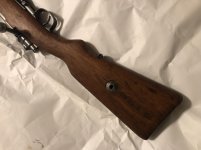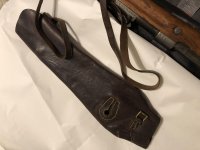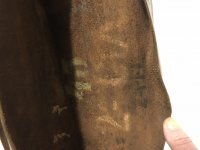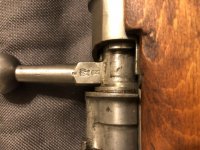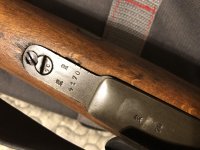3rdpursuit
Member
This is my first post so I’d like to thank everyone for the contributions you’ve made that have proven so informative. I’ve recently received a Gew98 and a DOU 44 code K98 from an estate and was wondering if someone could help decipher the markings and originality. This post will be about the Gew98, I’ll post about the DOU44 at a later time. I don’t see any Turkish property markings, and the barrel channel of both the handgiard and stock also match the rifle which is matching itself to the screws. Any info or comments are welcome and appreciated.










